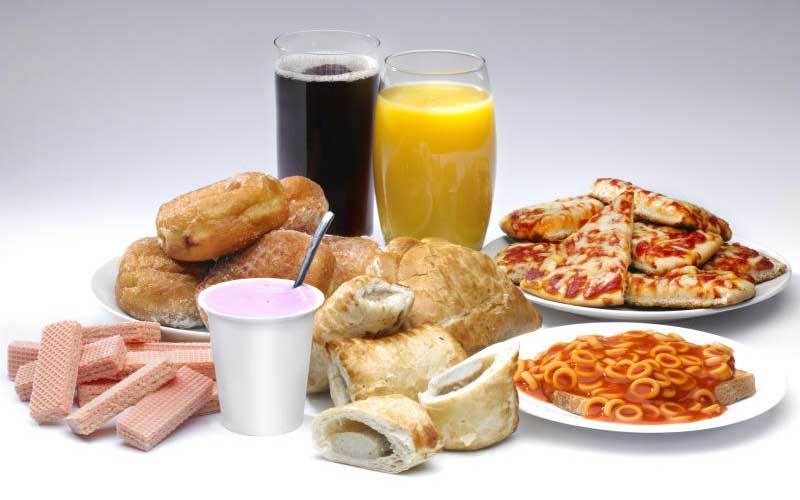
Ultra-processed foods have been linked to early death and poor health. But what is ultra-processed food?
Ultra-processed foods usually contain ingredients that you wouldn’t add when cooking homemade food. You may not recognise the names of these ingredients as many will be chemicals, colourings, sweeteners and preservatives.
The most commonly eaten ultra-processed foods are industrialised bread, packaged meals, breakfast cereals, sausages and other reconstituted meat products. These are closely followed by the expected confectionery, biscuits, pasties, buns and cakes and industrial chips.
After these are soft drinks, fruit drinks and fruit juices make up 2.5 per cent of the average calorie intake. Salty snacks, like crisps also fall in this category.
It can be tricky to identify food that has been ultra-processed because in some cases the same type of food could be minimally processed, processed or ultra-processed, depending on how it’s been made.
For example bread made from wheat flour, water, salt and yeast is processed, but add emulsifiers or colourings and it becomes ultra-processed. Plain oats, corn flakes and shredded wheat are minimally processed, but when the manufacturer adds sugar, flavourings or colourings, they become ultra-processed breakfast cereals.
Plain yoghurt is minimally processed, but add sweeteners, preservatives, stabilisers or colourings and it becomes ultra-processed.
When food has been processed, studies show that the nutrient availability in the small intestine is affected. This is because the plant properties and animal cells have been altered. Issues arise when ultra-processed foods begin replacing unprocessed and minimally processed foods, which contain vital nutrients, in your diet.
5 ways to recognise ultra-processed food
A long list of ingredients, especially if it includes things only used in factory-made food, may indicate that a food is ultra-processed. A product containing more than five ingredients is likely to be ultra-processed.
Unrecognisable ingredients could be additives. Most of them are probably safe, but negative effects have been suggested for a few.
High fat, sugar and salt content is common in ultra-processed food – look out for the traffic light label on foods for levels of these.
‘Fresh food’ with a long shelf life may indicate the presence of preservatives. Some foods that contain preservatives, such as bacon (which contains salt and nitrates), are not ‘ultra-processed’.
However, bacon is not a healthier alternative to salami, which is classed as ‘ultra-processed’ because it has more added ingredients and has undergone a further process in the factory.
Stay informed. Subscribe to our newsletter
Bucking the trend is long-life milk, which has been pasteurised at an ultra-high temperature (UHT) and doesn’t contain preservatives and so isn’t classified as ultra-processed, rather minimally processed. Check the label for preservatives such as sodium benzoate, nitrate and sulphite, BHA and BHT.
Aggressive marketing and branding. Ever seen a high-profile marketing campaign for apples and pears? Thought not.
 The Standard Group Plc is a
multi-media organization with investments in media platforms spanning newspaper
print operations, television, radio broadcasting, digital and online services. The
Standard Group is recognized as a leading multi-media house in Kenya with a key
influence in matters of national and international interest.
The Standard Group Plc is a
multi-media organization with investments in media platforms spanning newspaper
print operations, television, radio broadcasting, digital and online services. The
Standard Group is recognized as a leading multi-media house in Kenya with a key
influence in matters of national and international interest.
 The Standard Group Plc is a
multi-media organization with investments in media platforms spanning newspaper
print operations, television, radio broadcasting, digital and online services. The
Standard Group is recognized as a leading multi-media house in Kenya with a key
influence in matters of national and international interest.
The Standard Group Plc is a
multi-media organization with investments in media platforms spanning newspaper
print operations, television, radio broadcasting, digital and online services. The
Standard Group is recognized as a leading multi-media house in Kenya with a key
influence in matters of national and international interest.










